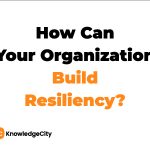A federal government career promises stability but doesn’t come without unique challenges. In recent years, a worrying decline in government employee morale has been noted, signaling a call for strategic interventions.
How can executives boost morale in their teams, foster engagement, and consequently improve the performance of their agency?
This guide provides insights into the complex landscape of government employment, the early signs of low morale, and effective strategies to rejuvenate employee spirit and productivity.

Why Is it Challenging to Be Motivated as a Public Sector Employee?
Government roles carry an inherent set of difficulties that can erode a public sector employee’s motivation. According to a Mentor Resources analysis, bureaucratic constraints, limited advancement prospects, job insecurity, and perceived inequity in rewards and recognitions serve as key roadblocks to motivation.
The Government Executive reveals a consistent decrease in morale among public sector employees in the past year. The Federal Employee Viewpoint Survey (FEVS) employee engagement index has remained stagnant at 71 out of 100 since 2022; with the FEVS global satisfaction index having dropped from 64 to 62.
These statistics suggest that morale among public sector employees has been declining for several years. This is a concerning trend, as it leads to decreased productivity, increased turnover, and difficulty recruiting and retaining top talent. This suggests that immediate, targeted interventions are needed to address this issue.
The Warning Signs of Low Morale
Spotting low morale in its early stages is critical for managing and remedying its potential fallout. These signs often manifest in subtle but distinguishable ways.
Decreased productivity is a common sign of low morale. Employees suffering from low morale often lack the motivation to complete their tasks efficiently and diligently, leading to a decline in the quality and quantity of their work. This dip in performance can significantly impact the overall output of a department or agency, which in turn can affect the organization’s mission and objectives.
Increased absenteeism is another telltale sign of declining morale. Employees who are not motivated to work may take more sick days, arrive late, or leave early, causing disruptions in the workflow and placing additional burdens on their colleagues. Prolonged or frequent absences can strain the camaraderie and trust within a team, exacerbating the issue of low morale.
Reduced enthusiasm for tasks is also indicative of dwindling morale. This may appear as a lack of interest in collaborative projects, disengagement during meetings, or reluctance to take on new assignments. When employees do not feel excited about their work, their creative input may diminish, impacting the innovation of the workplace.
According to Forbes, it is essential for leaders to stay aware of these signs and proactively intervene before the situation escalates. Proactive steps could include open discussions, individual counseling sessions, or implementing morale-boosting activities. Ignoring these early warning signs can lead to a decline in overall team performance, increased employee turnover, and a toxic work environment.
How Can Transforming Leadership Improve Morale?
Transformative leadership is a potent approach to uplifting morale. A transformative leader, as opposed to a traditional top-down leader, is characterized by the ability to inspire, respect, and motivate their team. By embracing a shared vision and leading with empathy and respect, such leaders foster an environment conducive to high employee morale.
Transformative leaders inspire their team members by creating and communicating a compelling vision for the future. This vision serves as a guiding light for the team, offering direction and fostering a sense of purpose. When employees feel that their work contributes to a meaningful objective, they are more likely to be motivated and engaged.
Leaders who treat their team members with respect, value their input, and acknowledge their contributions help to create a positive work culture. This respect is reflected in the way leaders listen to their teams, value their ideas, and involve them in decision-making processes. When employees feel heard and valued, their commitment and satisfaction levels rise, leading to improved morale.
Transformative leaders inspire their teams. They lead by example, demonstrating the values, work ethic, and commitment expected of their teams. They are not afraid to roll up their sleeves and work alongside their team members, fostering a sense of unity and shared endeavor. This approach motivates employees and builds a strong sense of community and engagement within the team.
Increased Engagement Is Key
Elevating employee engagement is a central pillar in boosting morale within government workplaces. Engaged employees often exhibit high levels of motivation, commitment, and productivity and express a strong sense of satisfaction from their work. Creating an environment that encourages active participation and cultivates a sense of belonging can be key to fostering this engagement.
The implementation of mentorship programs is a powerful strategy for boosting engagement. Such programs offer a platform for knowledge exchange and skills development and create an environment where employees feel valued and supported. Mentorship provides opportunities for personal and professional growth, often leading to heightened engagement.
The Impact of Morale on Productivity and Retention
The implications of low employee morale extend far beyond individual dissatisfaction, profoundly influencing productivity and employee retention within the government sector. As reported by Indeed, there is a negative correlation between low morale, reduced productivity, and increased turnover rates.
Disengaged employees tend to be less productive. Their lack of enthusiasm or motivation can lead to reduced output, frequent errors, and lower quality of work. These factors can have a detrimental effect on the efficiency and effectiveness of government operations and services.
Factors Contributing to Government Employee Morale Decline
Numerous factors contribute to employee morale decline among public sector employees. Bureaucratic constraints often inhibit employees’ freedom to innovate, while a lack of promotional opportunities can generate feelings of stagnation. Job insecurity, particularly during periods of political transition, can induce anxiety, and perceived disparity in rewards and recognitions can sow seeds of discontent.
The complicated and often slow-paced nature of government work can also lead to a decline in employee morale. Long decision-making processes, frequent policy changes, and excessive red tape can frustrate employees and stifle their enthusiasm. This is particularly true for those who are motivated by a sense of achievement and progress. The public scrutiny that government agencies undergo can also add additional stress to public sector employees, contributing to lower morale.
The Role of Communication in Morale Building
Transparent and consistent communication from government leaders is vital when building morale. Fostering an environment of open dialogue can build trust and reduce feelings of uncertainty, significantly boosting employee morale. Training managers are crucial in promoting effective communication strategies within the organization.
Constructive feedback is another important aspect of morale-building communication. It’s vital for leaders to provide feedback that is both appreciative and developmental, focusing on strengths and areas for improvement.
Maintaining open communication for feedback between employees and leaders is equally as important. When employees feel their voices are heard and their concerns are addressed, they will likely have higher morale.
Creating a Motivating Work Environment
Creating a supportive and stimulating work environment is vital for motivating public sector employees. This can involve providing flexible work schedules, ensuring a clean and safe workplace, and fostering a culture of appreciation and recognition. Such measures can significantly enhance employee morale and job satisfaction.
Creating a motivating work environment extends beyond physical conditions and into the emotional and intellectual climate. Encouraging collaboration and team spirit can foster a sense of camaraderie and belonging among employees, stimulating their motivation. Including employees in goal-setting and decision-making processes can give them a sense of purpose and alignment with the organization’s mission. Such involvement can enhance their commitment, satisfaction, and morale.
The Power of Recognition and Reward Systems
Recognizing employee achievements and implementing effective reward systems can significantly enhance public sector employee motivation. Rewards do not necessarily need to be monetary. Praise, increased responsibility, or opportunities for professional development can also greatly boost employee engagement.
Creating a culture that regularly acknowledges small victories can significantly impact morale. This approach helps employees feel seen and appreciated even for their everyday efforts and not just for major accomplishments.
Personalizing recognition and rewards to align with individual employees’ values and aspirations can further boost their motivation. For some, public recognition might be highly motivating; for others, private acknowledgment or extra time off may be more valued.
Promoting Work-Life Balance To Prevent Burnout
A healthy balance between work and personal life prevents burnout and disengagement. Government agencies can support employees in achieving this balance by encouraging flexible working hours, offering generous leave policies, and promoting mental health awareness. A balanced work-life equation significantly improves morale and reduces the risk of burnout.
Promoting work-life balance also involves creating a culture that respects employees’ time outside of work. Encouraging employees to disconnect during their off-duty hours and discouraging the expectation of being always available can help mitigate burnout.
Providing resources and support for employees to manage stress, such as employee assistance programs and wellness initiatives, can show employees that their well-being is valued. Such efforts help prevent burnout and contribute to a more resilient workforce with higher morale.
Conclusion
Boosting morale and fostering engagement within the federal workforce is an ongoing challenge. It requires a comprehensive, thoughtful approach that addresses the unique challenges inherent in the public sector. It calls for transformational leadership that not only envisions a compelling future but also fosters a sense of respect, recognition, and inclusion among all employees.
The path to high morale encompasses open and constructive communication, a motivating work environment, a robust recognition and reward system, and a focus on promoting work-life balance to prevent burnout. However, no strategy would be effective without leaders dedicated to recognizing the early signs of low morale and responding proactively.
The stakes are high. The cost of inaction—in terms of productivity, employee turnover, and public service quality—is too significant to ignore. Building morale is not just an ethical imperative but a strategic necessity for government organizations aiming for excellence in public service delivery.
Creating an environment where employees feel valued, heard, and motivated is the key to building a resilient and high-performing government workforce. These efforts will ensure the stability of a federal career, propelling government agencies toward their goals.
Subscribe to Our Newsletter
Join 80,000+ Fellow HR Professionals. Get expert recruiting and training tips straight
to your inbox, and become a better HR manager.

 Chuk Otakpor
Chuk Otakpor 







